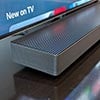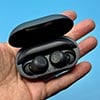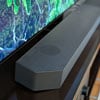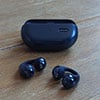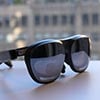While people have been hanging their TVs on the wall for decades, Samsung revolutionized the concept in 2017 with The Frame TV, pioneering the picture-frame TV category. Taking it a step further in 2022, they introduced a matte finish that virtually eliminates reflections, allowing the TV to blend even more effortlessly with its surroundings. Now, The Frame TV faces its first real challenge with Hisense’s CanvasTV (shown below) and TCL’s NXTFrame TV.

TCL and Hisense have been following a trajectory reminiscent of Samsung's rise to prominence in the mid-2000s, steadily building reputations for offering affordable yet high-quality TVs. Now, both brands are setting their sights on the lucrative lifestyle market, challenging Samsung's dominance with their own interpretations of the picture-frame TV concept.
The Frame, CanvasTV, and NXTFrame all have photo-frame-like bezels and matte screen finishes designed to eliminate reflections. These features make the TVs easily blend into your décor and are perfect for displaying photos and digital art when you’re not watching TV. And they are all incredibly thin, with The Frame 1.0 inches deep, the NXTFrame 1.1 inches deep, and the CanvasTV 1.4 inches deep.
Samsung is ahead of TCL and Hisense with four of its own bezel colors, and there are numerous third-party makers of bezels for The Frame offering dozens of additional designs. TCL is launching with only a light wood frame and Hisense only has a teak frame – both companies include the frames in the box. However, Hisense is already teasing a white and darker wood frame on its site, so the choice of bezels likely won’t be a major differentiating factor for long.
One big difference between the TVs is that The Frame has an external box for connecting your video gear, while the others have everything built into the TV. If you connect multiple devices to your TV, The Frame is a much more elegant solution because you don’t have to run additional wires to the TV. If you’re just streaming, though, the extra box becomes a liability.
Read more: Cutting the Cable Cord: A Step-by-Step Guide to Switching to Streaming
CanvasTV and NXTFrame run on the Google TV platform, while The Frame runs on Samsung’s proprietary Tizen platform. I’ve used both and, hands down, prefer Google TV. It’s easier to use, has a better recommendation algorithm, and the integration with Google Assistant is superior to Tizen’s Bixby assistant and Alexa integration.
All of these picture-frame TVs are 4K UHD edge-lit QLED TVs, which places them in the low-to-mid tier in terms of picture quality for their respective brands. They sit below the Mini-LED and full-array backlit TVs. For $1,499, you can buy TCL’s 65-inch QM8-Series Mini-LED TV or 65-inch NXTFrame TV (shown below). So it’s disappointing that none of these TVs have even a full-array backlit LED panel, considering the premium price.
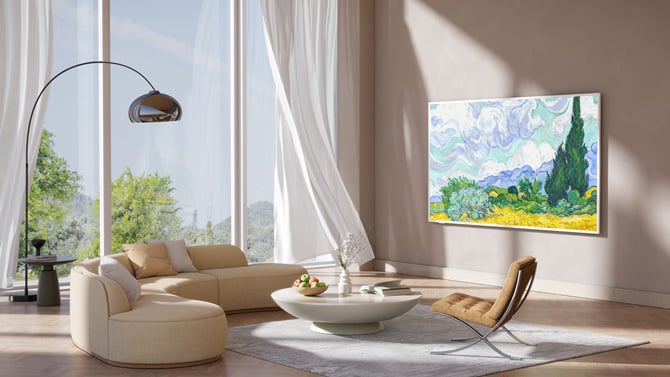
I haven’t viewed the three picture-frame TVs side-by-side, but based on their regular TV counterparts you won’t be blown away or disappointed in any of these TV’s picture quality. However, there are a couple of differences to note. The HiSense CanvasTV has the highest refresh rate at 144Hz versus 120Hz for the other two, which makes it more suitable for gaming. And the TCL NXTFrame is the only HDR Ultra-certified TV, so its HDR content should look better than on the other two TVs.
If you plan on using a multi-channel sound system with your TV, the best options are the NXTFrame and The Frame. NXTFrame supports all the major formats – Dolby Atmos, Dolby Digital+, DTS: X, and DTS Virtual X – while The Frame Supports Dolby Atmos and Dolby Digital+. If you’re just using the TV speakers for sound, the CanvasTV, with its 36W speakers and support for DTS Virtual X, or The Frame, with its 40W speakers and Dolby Digital+ support, are better than the 20W speakers on the NXTFrame.
All three TVs have voice remotes and smart assistants built-in. As Google TVs, the NXTFrame and CanvasTV have Google Assistant built-in, and The Frame has Amazon Alexa. If you already own Amazon Alexa or Google Assistant devices, all the TVs can work with them. If you’re an Apple household, only NXTFrame and CanvasTV work with Apple HomeKit. And the CanvasTV remote has the added bonus of being backlit.
As digital picture frames, all three TVs enable you to showcase your own photos or display art available through their respective art stores. CanvasTV and The Frame are also equipped with an occupancy sensor, so the TV is only on and displays art when someone is in the room to conserve energy.
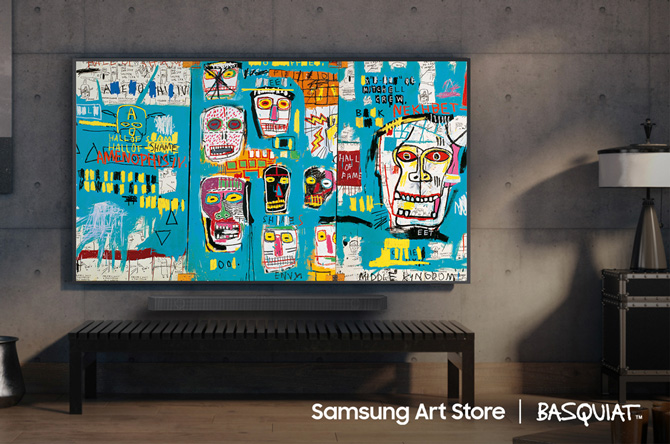
Read more: Samsung Music Frame Review: An Innovative Blend of Sound and Style
Whichever model of picture-frame TV you buy, you’re going to pay hundreds more for its premium design over its non-frame equivalent. So, none of the models are a bargain. Looking at the 65-inch models, Samsung and TCL both cost $1,999, while Hisense comes in at $1,299. All TVs include a wall mount, and the Hisense and TCL include wood frames – teak and light wood, respectively. Whereas the Samsung let's you choose from a selection of up to four frame colors (depending on size) at purchase. On price alone, the Hisense is unquestionably the best value. However, when making this type of purchase, there are the other considerations I discussed above:
Multi-channel audio: If you plan to hook up a multi-channel audio system, you’ll want a TV that can decode the audio formats. That eliminates the CanvasTV, which only supports DTS Virtual X. While The Frame doesn’t support the DTS formats, the majority of content is Dolby Atmos or Dolby Digital+.
AV Components: Most people want to hang their picture-frame TV on the wall, so they may not want to manage a bunch of cables hanging from the back of their TV. With its One Connect Box, the Samsung Frame has only two cables – power and an AV cable. However, if you’re streaming all your content, choosing the NXTFrame or CanvasTV makes more sense.
Smart Home Ecosystem: If you own Apple devices and use HomeKit for your smart home control, you’ll want to choose the NXTFrame or CanvasTV. The Frame doesn’t work with HomeKit. NXTFrame and CanvasTV are also better choices if you’re using Google and Nest products. However, if everything is set up with SmartThings, The Frame will easily integrate with your existing system.
Screen size: Samsung The Frame is available in 43 ($999), 50 ($1,299), 55 ($1,499), 65 ($1,999), 75 ($2,999), and 85 inches ($4,299). TCL NXTFrame is available in 55 ($1,499), 65 ($1,999), 75 ($2,499), and 85 inches ($3,999). Hisense CanvasTV is available in 55 ($999) and 65 inches ($1,299).

Picture-frame TVs have come a long way since Samsung introduced The Frame in 2017, and it’s great to see TCL's NXTFrame and Hisense's CanvasTV entering the category. Each model has its strengths, whether it's Samsung's One Connect Box, TCL's HDR performance, or Hisense's competitive pricing. Ultimately, the best choice will depend on your specific needs, existing smart home ecosystem, and budget.
[Image credit: Hisense, TCL, Samsung]
For the past 20+ years, Techlicious founder Suzanne Kantra has been exploring and writing about the world’s most exciting and important science and technology issues. Prior to Techlicious, Suzanne was the Technology Editor for Martha Stewart Living Omnimedia and the Senior Technology Editor for Popular Science. Suzanne has been featured on CNN, CBS, and NBC.

